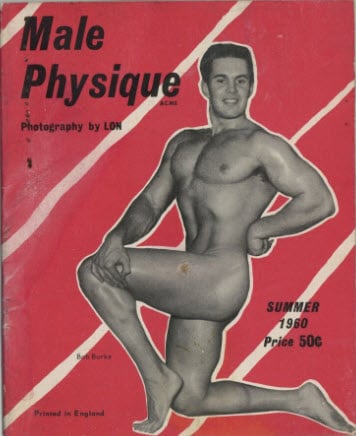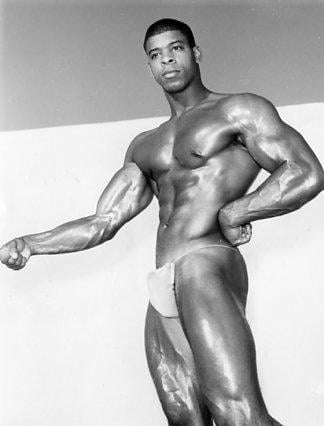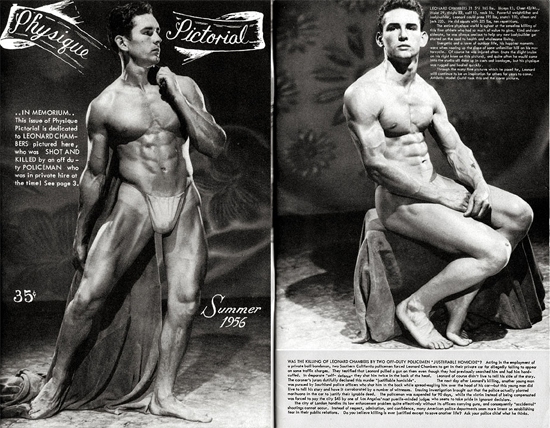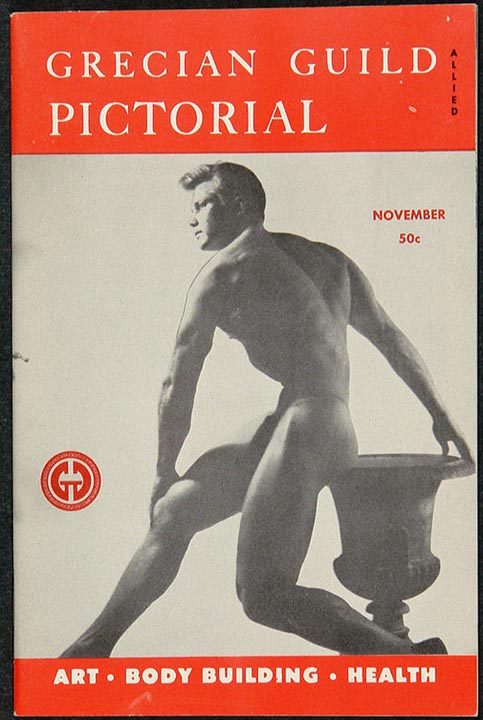Before American Apparel & Dov Charney, There Was Delia Mizer & AMG
Since we’re on a bit of a fashion kick this week, we thought we’d draw attention to some rather fashionable drawers – underwear, that is. When AMG...
3 min read
Bob Mizer Foundation : Jan 12, 2016 6:10:00 PM

In the 1940s and 1950s, there existed a group of men who were both excited and fearful when they made the trek to the mailbox every day.
"Had the magazine arrived that day? Did the mail carrier suspect anything? What about my wife? Or the neighbors?" The shame would be awful, and the harassment would be relentless.
 But, oh, there were the bodies contained in that small, pocket-sized periodical made the risk almost seem worth it. The oiled, muscular bodies, crowned with smiling, handsome faces, coveted by the many married, closeted men who received them in discreet paper wrapping through the mail.
But, oh, there were the bodies contained in that small, pocket-sized periodical made the risk almost seem worth it. The oiled, muscular bodies, crowned with smiling, handsome faces, coveted by the many married, closeted men who received them in discreet paper wrapping through the mail.
Still, there was law enforcement to consider. If pubic hair was visible peeking out of a model’s posing strap, or the bulge contained in the posing strap was too prominent, it could mean being placed under surveillance, arrest or even worse for the publisher, the photographer and the consumer. The Comstock Act of 1873 forbade mailing obscene materials – and in Bob Mizer’s time, the U.S. Postal Service and law enforcement officials defined obscenity quite liberally, as they would until nudity in art was declared not obscene by the U.S. Supreme Court in the late 1960s.
“Closeted men in those days were able to enjoy male physique magazines like ‘Physique Pictorial,’ ‘Muscle Power’ and ‘The Male Figure’ because they touted self-improvement, exercise and healthy living,” says Dennis Bell, founder and president of The Bob Mizer Foundation. “In reality, they were much more than that -- sexually, the magazines were a way for these men to enjoy the aesthetics of masculine, toned men."
 Most of the publishers of these magazines made very clear their intention to improve their subscribers’ lives through more healthful lifestyles. One 1954 issue of “Physique Pictorial” announced that the publication was “planned primarily as an art reference book and is widely used in colleges and private schools throughout the country. . . . Several psychologists and psychiatrists have told us that books such as Pictorial often have a highly beneficial effect on negative, withdrawn patients who become inspired by the extrovert enthusiasm and exuberance of healthy, happy athletes.”
Most of the publishers of these magazines made very clear their intention to improve their subscribers’ lives through more healthful lifestyles. One 1954 issue of “Physique Pictorial” announced that the publication was “planned primarily as an art reference book and is widely used in colleges and private schools throughout the country. . . . Several psychologists and psychiatrists have told us that books such as Pictorial often have a highly beneficial effect on negative, withdrawn patients who become inspired by the extrovert enthusiasm and exuberance of healthy, happy athletes.”
Although photographers practiced self-censorship to protect themselves, they knew their audience members could read between the proverbial lines. And in addition to their too-often proclamations of being primarily interested in healthy living, the props used in each photo evoked nude Roman and Grecian gods of the ancient world – drapery, columns and fake marble pedestals added to the feel.
The stories of everyday closeted gay men, who hid these publications in their underwear drawer or under their bed, and were ultimately punished for violation of obscenity laws, weren’t the only ones who had run-ins with law enforcement officials. One of Mizer’s own contemporaries, the beefcake photographer John Palatinus, shot for “Tomorrow’s Man,” and was investigated by the U.S. Postal Service in the early 1960s for sending explicit photos through the mail. Palatinus was allowed to go free after spending only one night in jail; however, much of his work was lost in the police raid on his studio. Palatinus died in September at age 85, having left male physique work after his encounter with the law.
Author and historian David Johnson, in a 2014 interview, said the U.S. Postal Service specifically operated as an institution steeped in homophobia.
 “Gay publications, gay magazines and gay penpal clubs were of particular interest to postal inspectors,” Johnson noted. “They believed that any discussion of homosexuality and any depictions of male nudity were encouraging homosexuality in American society. And so in a sense, it wasn’t that these were necessarily obscene, under shifting definitions of obscenity. But if the images were in any way about homosexuality, the Post Office considered them obscene and a threat to the public.”
“Gay publications, gay magazines and gay penpal clubs were of particular interest to postal inspectors,” Johnson noted. “They believed that any discussion of homosexuality and any depictions of male nudity were encouraging homosexuality in American society. And so in a sense, it wasn’t that these were necessarily obscene, under shifting definitions of obscenity. But if the images were in any way about homosexuality, the Post Office considered them obscene and a threat to the public.”
Although suits against men in possession of these publications were almost always convicted in a lower court, they would nearly always lose if the case ascended to a higher court level.
In one 1962 landmark case, MANual v. Day, the Supreme Court ruled that physique photographs and male semi-nudity were not inherently obscene – there was an acknowledgement by the court, according to Johnson, that these magazines were intended for gay audiences.
Even as they lost suits in higher courts, Post Office officials continued to seek to “rehabilitate” and “cure” the men who subscribed to these magazines by almost any means necessary. According to Johnson, some officials may have opened second-class mail if it came from a known magazine publisher. Opening first-class mail is illegal, but some employees may have claimed to open it “accidentally,” and then report the offending recipient, claiming a moral duty to do so. In a handful of cases, postal employees even accessed the mailing lists of certain male physique magazines, making unannounced visits to the employers of those men on the mailing lists and “warning” these men of their employees’ proclivities.
Some of the men were fired, and many filed complaints to the American Civil Liberties Union, which kept detailed records of the ACLU’s responses to the employers who unfairly terminated their workers. Of course, few of the visits by the ACLU led to any tangible action by either party.
“We still have a long way to go in terms of understanding and acceptance of materials deemed obscene, even today, in 2016,” Bell says. “But the men from prior generations had valid fears about how possession of these materials would unravel their very livelihood.”

Since we’re on a bit of a fashion kick this week, we thought we’d draw attention to some rather fashionable drawers – underwear, that is. When AMG...

It seems the LAPD, that stronghold of racial profiling and police brutality, has been playing fast and loose with its night stick for decades now....

H. Lynn Womack was at a turning point in his young life.

The Bob Mizer Foundation last week launchedPosingStrap.TV, a video streaming service that allows viewing of vintage physique films on its website,...